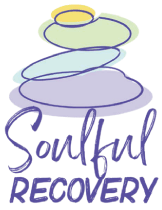Healthcare professionals dedicate their lives to caring for others, often working long hours in high-stress environments while making life-or-death decisions. But behind the scrubs and white coats, many doctors, nurses, and other medical professionals are quietly fighting their own battle with substance use disorders. Recognizing the signs of addiction in healthcare workers isn’t just important—it can save careers, protect patients, and ultimately save lives.
The Hidden Epidemic
The statistics are sobering. Research indicates that 10-15% of healthcare professionals will misuse substances during their lifetime, with rates of prescription drug abuse being five times higher among physicians compared to the general population. According to the National Center for Biotechnology Information (NCBI), healthcare providers experience substance use at rates significantly higher than non-medical professionals, with high-stress specialties showing the highest incidence.
Understanding what psychological resilience looks like—and what happens when it breaks down under chronic stress—is crucial for recognizing when colleagues may be struggling.
These elevated rates aren’t about moral weakness or poor character. Healthcare workers face unique risk factors: constant exposure to controlled substances, belief in “pharmaceutical invincibility” (the mistaken notion that medical knowledge provides protection from addiction), grueling work schedules, compassion fatigue, and the emotional toll of regularly witnessing suffering and death.
Recognizing the Warning Signs at Work
Addiction rarely announces itself clearly. Healthcare professionals, in particular, are skilled at hiding their struggles, often maintaining functionality longer than others due to their medical knowledge and fear of professional consequences. However, certain behavioral patterns can signal a problem.
Changes in Work Performance:
According to Michigan Medicine, common warning signs include recurring absences or tardiness, problems with functionality, difficulty executing clinical decisions, making documentation errors, and changes in productivity levels. A nurse who was once meticulous about charting might suddenly start making frequent errors or omissions. A physician known for diagnostic accuracy may begin second-guessing clinical decisions or showing poor judgment.
Other workplace red flags include:
- Disappearing for extended periods during shifts
- Frequently volunteering for shifts with less supervision
- Not returning pages or calls promptly
- Offering to handle medication administration or waste disposal for other staff members
- Showing up for work outside scheduled shifts without clear reason
Behavioral and Personality Changes:
Addiction Center notes that emotional changes such as irritability, secrecy, defensiveness, mood swings, and social isolation often accompany substance use disorders. A typically collegial team member might become withdrawn, defensive when questioned about their behavior, or exhibit dramatic personality shifts.
These behavioral changes connect closely with the importance of mental health support in addressing underlying issues before they escalate into full-blown addiction.
Physical and Clinical Indicators
Beyond behavioral changes, physical signs and clinical patterns can reveal substance use problems:
Physical Appearance:
- Changes in hygiene or grooming habits
- Weight loss or gain
- Bloodshot eyes or frequent use of eye drops
- Appearing overly tired or, conversely, unusually energetic
- Tremors or unsteady gait
- Smelling of alcohol or using excessive cologne/perfume to mask odors
Medication-Related Red Flags:
- Frequent “wasting” of controlled substances
- Discrepancies in medication counts
- Volunteering to be the primary person who administers or disposes of narcotics
- Patients under their care reporting inadequate pain control despite documented medication administration
- Signing out medications for patients who have been discharged or transferred
These clinical indicators require immediate attention and intervention, as they directly impact patient safety.
The Unique Challenges Healthcare Workers Face
Understanding why healthcare workers are vulnerable to addiction helps in recognizing and addressing the problem with compassion rather than judgment. Building resilience is particularly challenging in medical environments where chronic stress is normalized.
Access and Opportunity: Healthcare professionals work with controlled substances daily, making diversion relatively easy for those struggling with addiction. This proximity removes one of the typical barriers to substance abuse.
Stress and Burnout: Emergency physicians, anesthesiologists, and critical care nurses face particularly high rates of substance use disorders, correlating with the extreme stress of their specialties. The emotional weight of patient outcomes, combined with long hours and insufficient rest, creates a perfect storm for maladaptive coping.
Culture of Silence: Healthcare culture often stigmatizes mental health struggles and addiction, creating barriers to seeking help. Many professionals fear losing their licenses, facing disciplinary action, or damaging their reputations if they come forward about substance use problems.
What Colleagues and Supervisors Should Do
If you suspect a coworker is struggling with addiction, taking appropriate action is both a professional and ethical obligation. Patient safety must be the priority, but approaching the situation with compassion can make the difference between someone getting help or continuing to spiral.
Document Concerns: Keep detailed, objective records of concerning behaviors, including dates, times, and specific observations. Focus on facts rather than assumptions.
Report Through Proper Channels: Most healthcare facilities have protocols for reporting suspected impairment. Many states also have professional health programs designed specifically to support healthcare workers with substance use disorders while protecting public safety.
Offer Support, Not Judgment: If appropriate and safe, expressing concern to the individual privately can be powerful. Approach from a place of care: “I’ve noticed some changes, and I’m worried about you. How can I help?”
Remember that early intervention significantly improves outcomes. Waiting for the situation to worsen isn’t helping anyone.
Recovery and Returning to Practice
The good news is that healthcare professionals who receive appropriate treatment often have excellent recovery outcomes. Comprehensive relapse prevention planning is essential for healthcare workers returning to practice, as they face unique challenges in navigating environments where substances are readily available.
Many states offer monitoring programs that allow healthcare professionals to continue or return to practice while receiving ongoing support and accountability. These programs typically include:
- Regular drug testing
- Attendance at support meetings
- Continued therapy or counseling
- Workplace monitoring
- Periodic evaluations
The path back isn’t easy, but it’s absolutely possible. Healthcare workers have dedicated their lives to healing others—they deserve the opportunity to heal themselves. With proper treatment, ongoing support, and sometimes peer coaching, they can return to the profession they love while maintaining their recovery.
Breaking the Silence
The healthcare industry must do better at addressing substance use disorders among its workforce. This means creating cultures that encourage seeking help rather than hiding struggles, implementing early intervention programs, providing access to confidential treatment resources, and offering support for professionals in recovery.
If you’re a healthcare worker struggling with substance use, please know that you are not alone, and you are not beyond help. Your medical knowledge doesn’t make you immune to addiction—it just makes you human. Reaching out for help isn’t a sign of weakness; it’s the same evidence-based intervention you would recommend to a patient facing similar circumstances.
Recovery is possible, and your profession needs skilled, compassionate healthcare workers like you—healthy and whole.

